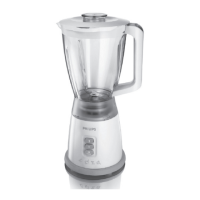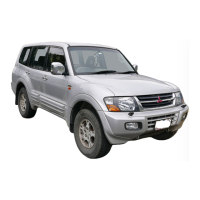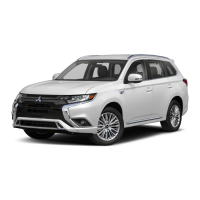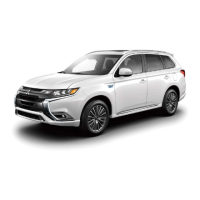Troubleshooting
Q-27
57 Whining or whistling noise
64 Difficult shifting
Defective center bearing, if so equipped.
1
Lack of oil.
2 Internal wear, damage or incorrect adjustment.
Rear axle and differential
Note:
For differential servicing information, refer to Chapter 8, unless
otherwise specified.
58 Noise - same when in drive as when vehicle is coasting
1
Road noise. No corrective action available.
2 Tire noise. Inspect tires and check tire pressures (Chapter 1).
3 Front wheel bearings loose, worn or damaged (Chapter 1).
4 Insufficient differential oil (Chapter 1).
5 Defective differential.
59 Knocking sound when starting or shifting gears
Defective or incorrectly adjusted differential.
60 Noise when turning
Defective differential.
61 Vibration
See probable causes under Driveshaft. Proceed under the guidelines
listed forthe driveshaft. If the problem persists, checkthe rearwheel bear-
6-
ings by raising the rear of the vehicle and spinning the wheels by hand.
Listenforevidenceof rough (noisy) bearings. Remove and inspect (Chap-
ter 8).
62 Oil leaks
--
1
Pinion oil seal damaged (Chapter 8).
2 Axleshaft oil seals damaged (Chapter 8).
3 Differential cover leaking. Tighten mounting bolts or replace the gas-
ket as required.
4 Loose filler or drain plug on differential (Chapter 1).
5. Clogged or damaged breather on differential.
Transfer case (4WD models)
Note:
Unless otherwise specified, refer to Chapter 7C forservice and re-
pair information.
63 Gear jumping out of mesh
1
Incorrect control lever freeplay.
2 Interference between the control lever and the console.
3 Play or fatigue in the transfer case mounts.
4 Internal wear or incorrect adjustments.
65
Noise
1 Lack of oil in transfer case.
2 Noise in 4H and 4L, but not in 2H indicates cause is in the front differ-
Zntial or front axle.
3 Noise in 2H, 4H and 4L indicates cause is in rear differential or rear
axle.
4 Noise in 2H and 4H but not in 4L, or in 4Lonly, indicates internal wear
or damage in transfer case.
Brakes
Note:
Before assuming a brake problem exists, make sure the tires are in
g~odconditionandinflatedproperly, thefrontendalignmentiscorrectand
the vehicle is not loaded with weight inan unequalmanner. Allservicepro-
cedures for the brakes are included in Chapter 9, unless otherwise noted.
66 Vehicle pulls to one side during braking
1 Defective, damaged or oil contaminated brake pad on one side. In-
spect as described in Chapter 1. Refer to Chapter 10 if replacement is re-
quired.
2 Excessivewear of brake pad material ordiscon one side. Inspect and
repair as necessary.
3 Loose or disconnected front suspension components. Inspect and
tighten all bolts securely (Chapters 1 and IO).
4 Defectivecaliperassembly. Removecaliperand inspectforstuckpis-
ton or damage.
5 Scored or out of round rotor.
6 Loose caliper mounting bolts.
7 Incorrect wheel bearing adjustment.
67 Noise (high-pitched squeal)
1 Front brake pads worn out. This noise comes from the wear sensor
rubbing against the disc. Replace pads with new ones immediately!
2 Glazed or contaminated pads.
3 Dirty or scored rotor.
4 Bent support plate.
68 Excessive brake pedal travel
1 Partial brake system failure. Inspect,entire system (Chapter 1) and
correct as required.
2 Insufficient fluid in master cylinder. Check (Chapter 1) and add fluid
bleed system if necessary.
3 Air in system. Bleed system.
4 Excessive lateral rotor play.

